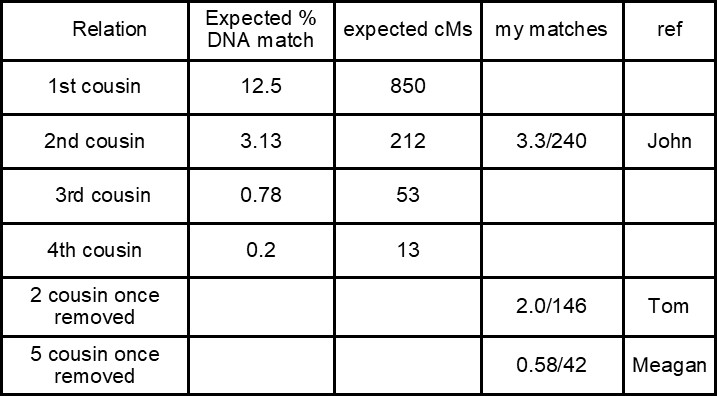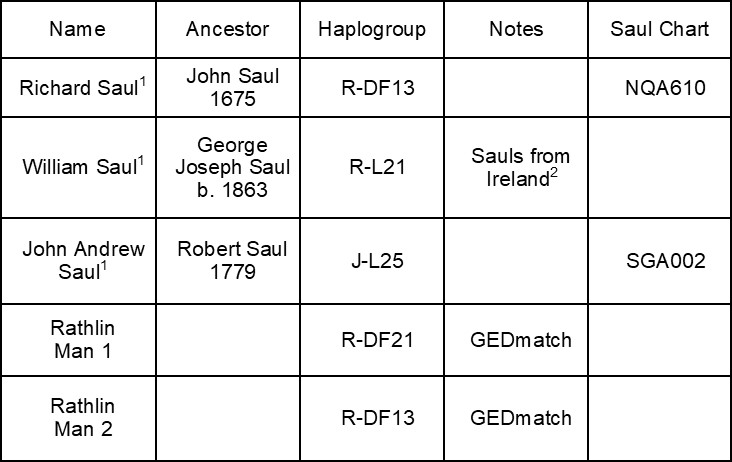By Richard Saul
This article was published in the August 2022 edition of Soul Search, the Journal of The Sole Society
A quick reminder about DNA, skip this paragraph if you don’t need it. At birth we inherit 23 chromosomes from our parents which contain our DNA. Autosomal DNA is inherited from both parents and can be used to trace both the male and female line, probably only to a maximum of around eight generations back. Men have yDNA which they have inherited only from their fathers. So the yDNA is passed down from father to son and can be used to trace the male line both recently but it also goes back to ancient times. Mitochondrial DNA which is passed from the mother, unchanged, from generation to generation this provides information about a person’s ancient maternal line.
Getting your DNA tested
The science of DNA testing has evolved rapidly since the 1980s and there are a number of well established companies providing testing and matching services.
Ancestry.co.uk only measure autosomal DNA so their service is suitable for studies of recent family ancestry and matching to find relations. Realistically and with a soundly established family chart it is possible to research back up to 8 generations. [Ed: however Ancestry is by far the most popular service currently used and contains data from the most families, this is what Maureen Storey and Linda Butler are using for their pilot study of the Sole family DNA]
Livingdna.com, 23andMe and myheritage all provide autosomal DNA, yDNA and mtDNA results from a sample (the methods and results are slightly different basis for each). The yDNA and mTDNA are usually reported as Haplogroups which have been categorised by reference to prehistoric known locations and migrations of humans over more than 7,000 years. The results can be used to determine your most likely ancient ancestors going back hundreds of generations. People with a matching Haplogroup are not necessarily relations on a recent family tree, but only share an ancient ancestor. As surnames only became used in the last 1,000 years your current relations may have completely different family names! However if you are a male Saul and have the same yDNA as another male Saul, you will almost certainly have a common Saul ancestor and it is this that is of interest to the society. All the companies provide a matching tool for the autosomal DNA and it is generally possible to transfer your results to more general sites such as GEDmatch to increase the chances of finding a match.
For research into your ancient past there are various websites such as familytreedna.com which collect and report DNA data as part of research projects for major Haplogroups.
My personal experience of DNA testing and matching
In early 2000 I took a DNA sample (cheek swab) for Livingdna.com and a few weeks later received the results. My yDNA Haplogroup was reported as R-L21 and my mtDNA (maternal) Haplogroup was H6a1b3a. The Autosomal DNA was reported in the form of a map showing where similar DNA was to be found. As I knew that my family had been in Cumbria since medieval time it was not surprising to learn that Cumbria and England were the main areas identified.
I then submitted my DNA to the Livingdna.com website for family matching. Since then they have found 313 matches in just over two years.
Autosomal DNA
Autosomal DNA is inherited equally from your mother and father. Matches of this DNA can be used to find any relatives over recent generations and this is usually done by the reported value of shared cMs (centiMorgans) or as a percentage of DNA matching. There is a theoretical value for relatives so an identical twin would have 100% match, a brother or sister a 50% match and so on as the table below. In practice the actual figures vary in a range around the expected value.
Once you have a match from the DNA result it is necessary to explore the match in conjunction with your family chart and genealogy records so that your chart can be updated. Much depends on the completeness of your chart, the chart of the match, and their willingness to discuss any link.
In my case I have had 313 matches since January 2020. Meagan (see table opposite) fits directly in my Cumbrian Saul NQA chart. We have yet to find any shared matches. Tom is a match on my paternal grandmother’s chart and has led me to develop her ancestry which I was partly aware of and, as a result, I now have an abundance of second cousins all over the globe – including second cousin John.
I have also made contact with John B and Emma B who are descended from the maternal Lawson branch of the Cumbrian Sauls. Their ancestor had been adopted after birth and so they had been unaware of this until the DNA match was made. It would appear that they are second cousins twice removed.

Mitochondrial DNA
My mtDNA result was H6a1b3a which is most likely to have originated around the Bronze Age in Eurasian areas such as Russia. These ancient humans, c3000BC, were part of the migration to Europe and British/Irish areas which reinforces the paternal yDNA result.
Y-DNA
My results show that I come from the R1b root which has become R-M269 (c 4000BC), commonly found in north west England, Scotland and Ireland areas. It further became subdivided, in my case to R-L21 around 3000BC and further into R-DF13 around 2500BC.
Gedmatch also have some prehistoric DNA results from archaeological samples. The samples of burials remains on Rathlin Island off the coast of Northern Ireland exhibit
R-DF13. This matches my Haplogroup so I share a common male ancestor with those individuals.
The Saul y-DNA project
Our Society has agreed to embark on two pilot DNA projects to develop our knowledge of the family charts and any links between them.
Firstly Maureen and Linda Butler will manage studies of autosomal DNA of Soles to develop the family charts. Hopefully this can be extended to the other surnames in the future.
I have volunteered to develop a project to collect as much yDNA data from Saul/Sawle/Sall etc males to determine whether some of the many 100+ Saul charts are linked. The table below shows the three members of the society (including me) whose y-DNA profile we have and that so far they are all different haplogroups. that we have very little data to start with and I would like to ask for your help to find male Sauls who would be interested and willing to take yDNA test and share the results. Are you a male Saul or do you know of anybody named Saul? If so please consider using one of the companies above to get your yDNA tested.

